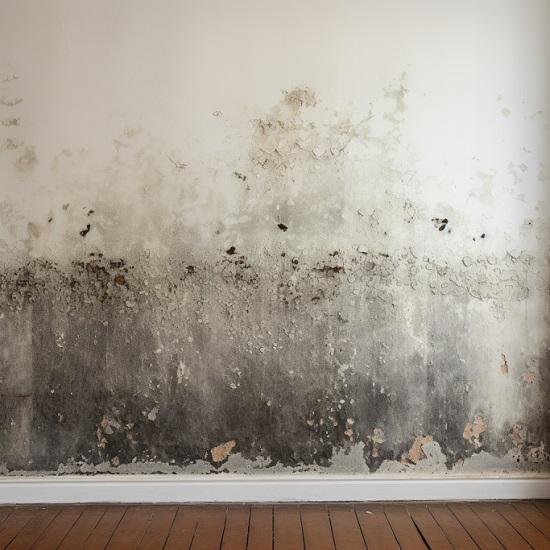Support on What to Do After Mold Remediation
Support on What to Do After Mold Remediation
Blog Article
Your Ultimate Guide to Post Mold Removal Methods
Browsing the world of post-mold remediation techniques is a thorough process that demands focus to information and a detailed understanding of the complexities included. In the results of mold infestation, recognizing how to successfully eliminate the mold and mildew and prevent its reoccurrence is critical for preserving a healthy indoor environment. From choosing the right cleansing and decontaminating techniques to implementing strategies for lasting mold prevention, each action in the remediation trip plays an essential role in guaranteeing a successful outcome. As we begin on this expedition of post-mold remediation techniques, we will uncover the essential strategies and best methods that can aid you recover your area to its pre-mold problem and guard it against future mold threats.
Comprehending Post-Mold Removal Process
After finishing the mold remediation process, it is vital to recognize the post-mold removal strategies that are required to ensure a efficient and extensive cleaning. As soon as the mold has actually been eliminated, the next action includes cleansing and sanitizing the impacted areas to stop any type of regrowth of mold.
Furthermore, carrying out a final assessment post-remediation is vital to make sure that all mold has actually been effectively removed. This assessment ought to entail a complete aesthetic check in addition to perhaps air sampling to validate the absence of mold and mildew spores airborne. If the examination exposes any type of lingering mold, extra removal might be needed. Educating owners on precautionary steps such as regulating wetness levels and immediately dealing with any type of water leaks can aid preserve a mold-free environment.
Efficient Cleaning and Disinfecting Techniques

Avoiding Future Mold And Mildew Growth

Significance of Proper Air Flow
Appropriate ventilation plays an essential duty in avoiding wetness accumulation, a crucial aspect in mold and mildew growth within indoor atmospheres. Reliable ventilation systems assist eliminate excess moisture from the air, reducing the possibilities of mold and mildew spores locating the dampness they need to spread and sprout. Without sufficient ventilation, interior areas can come to be a breeding place for mold and mildew, resulting in possible health and wellness dangers and architectural damage.
By guaranteeing proper air blood circulation, air flow systems can also help in drying out wet locations more rapidly after water damage or flooding events, further hindering mold and mildew development. After mold remediation. In spaces like restrooms, cooking areas, basements, and attics where moisture degrees tend to be greater, setting up and maintaining efficient ventilation systems is vital in avoiding mold and mildew infestations

Surveillance and Maintenance Tips
Offered the important function that proper air flow Learn More plays in avoiding mold and mildew development, it is important to develop reliable tracking and upkeep tips to ensure the continued performance of air flow systems. Routine examinations of air flow systems should be conducted to check for any kind of indicators of clogs, leakages, or breakdowns that might restrain correct air flow. Surveillance moisture degrees within the residential or commercial property is also essential, as high moisture can add to mold growth. Mounting a hygrometer can aid track humidity degrees and sharp home owners to any spikes that may call for attention. Furthermore, making sure that air filters are on a regular basis cleaned or changed is essential for keeping the effectiveness of the ventilation system. Executing a timetable for routine maintenance tasks, such as duct cleansing and cooling and heating system examinations, can help stop concerns before they intensify. By remaining positive and alert to the condition of air flow systems, building owners can successfully mitigate the danger of mold regrowth and visit our website keep a healthy interior atmosphere.
Conclusion
To conclude, post-mold removal strategies are crucial for making sure a clean and risk-free setting. Understanding the process, applying reliable cleansing and decontaminating approaches, stopping future mold and mildew development, maintaining appropriate air flow, and routine tracking are all critical action in the remediation procedure. By adhering to these standards, you can effectively get rid of mold and prevent its return, functioning or promoting a healthy living room for all occupants.
In the consequences of mold and mildew problem, understanding exactly how to successfully get rid of the mold and prevent its reoccurrence is extremely important for preserving a healthy indoor setting. Once the mold and mildew has actually been eliminated, the next step entails cleaning and disinfecting the affected locations to avoid any type of regrowth of mold you can find out more and mildew - After mold remediation. After getting rid of visible mold development, it is crucial to clean up all surface areas in the afflicted area to get rid of any remaining mold and mildew spores. To even more improve mold prevention measures, it is vital to deal with underlying problems that at first led to mold growth.Given the crucial role that proper ventilation plays in protecting against mold and mildew growth, it is crucial to establish efficient surveillance and maintenance pointers to guarantee the continued capability of air flow systems
Report this page